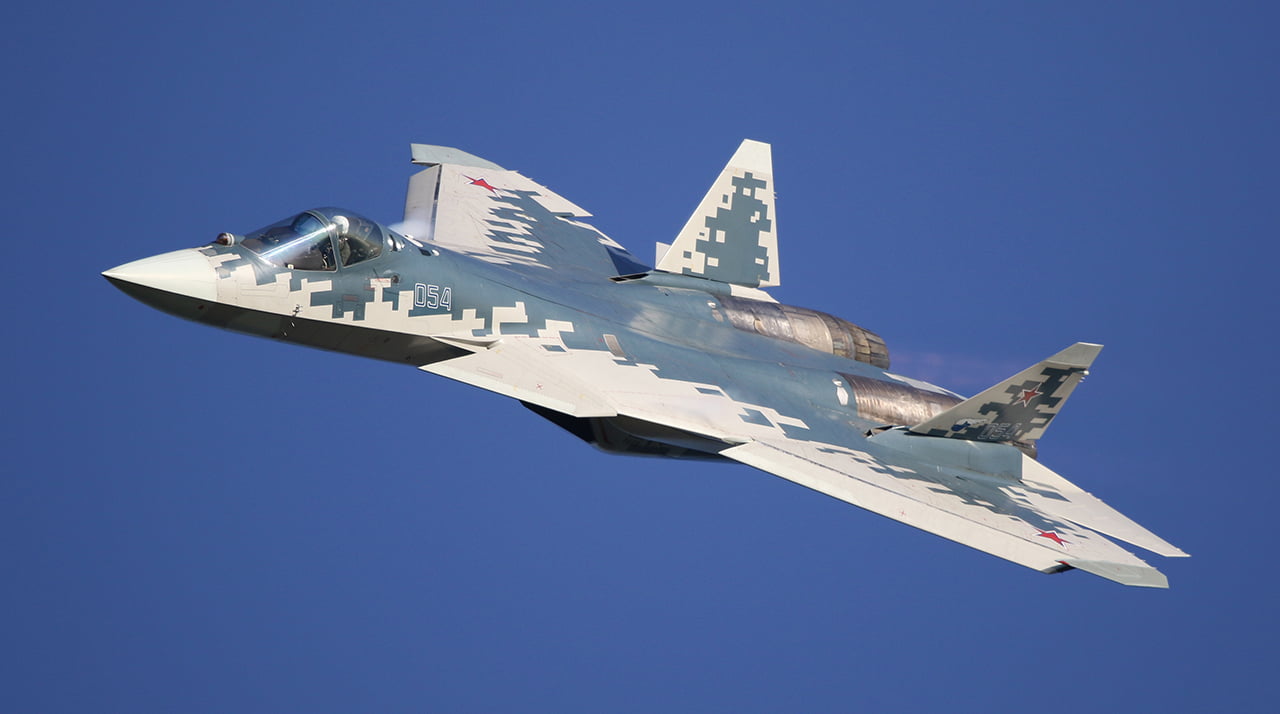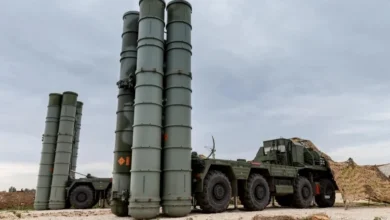In The Ukraine War, Russia Confirms Using Su-57 Fighters As They Destroy Targets And Puncture Western Myths

- The X-59MKM is a fire-and-forget missile that may be used over any terrain and at any time of year with an illumination level ranging from 10-3 to 105 lux.
- The Su-57 can identify Ukrainian air defence radar emissions while flying as an airborne tactical network. It also shares a consolidated image and ground control for real-time engagement of active adversary radars.
“I would particularly like to pick out the Su-57 fifth-generation multifunctional aircraft in terms of the quality of combat use. It accomplishes complex duties of targeting both ground and air targets in each sortie thanks to its diverse arsenal of missiles, he said.
According to General Surovikin’s remarks, the Su-57 is being utilised for air-to-air and air-to-ground missions, and in both missions, it has scored hits.
Izvestia had previously claimed in June 2022 that Russia had sent four Su-57s for the SMO, and the planes were being employed to create a tactical information network.
Russia had previously confirmed flying four Su-57 aircraft in the Syrian operation. Vladimir Gutenev, a member of the State Duma’s expert council for the aviation sector, stated in July 2018.
Our four Su-57s’ stay in Syria has undoubtedly given us the opportunity to learn more about this machine’s capacity to find American F-22s and F-35s that are operating in the same theatre of operations.
We will go into the equipment and strategies that Russian forces are most likely using with the Su-57 in the aforementioned roles in the paragraphs that follow.
Despite the Su-57’s combat experience in Syria, many of its capabilities will likely need to be put to the test before the SMO officially begins on February 24, 2022. Russian use of the fighter has therefore been cautious. Stand-off attacks and tactical information networking are likely the only operational limitations on its employment.
Front Aspect Stealth
The Su-57 is thought to be more radar detectable than US stealth fighters like the F-22 Raptor and F-35 Lightning. What is less well known is that while the front aspect stealth of the Su-57 is not particularly good, its side and rear aspect stealth are also passable.

That means it will be challenging for the AWACS to track the Su-57 if it is flying at the same altitude as a US E-3 or E-8 AWACS and heading directly for it. As a result, the Su-57’s head-on air-to-air or air-to-surface attack mode will be difficult for ground radars and AWACS to detect.
Because of this, the Su-57 could quickly fly to weapon discharge range without being seen by even the strongest foe.
Air-to-Air Missiles
General Surovikin made the implication that Su-57s had destroyed enemy fighters.
The Su-57 is outfitted for air-to-air combat with the long-range R-37M (RVV-BD) missile, the medium-range K-77M missile, and two short-range R-74M2 and K-MD missiles (Izdeliye 300). The K-MD is a brand-new design, whereas the R-74M2 is an update of the R-74 used for internal carriage.
Neither a radar or visual observation of the Su-57 in Ukrainian airspace, nor any reports of a near encounter between the Su-57 and a Ukrainian fighter, have been made. The K-77M or R-37M missiles would need to be credited for any air-to-air kills made by the Su-57.
The R-37M and K-77M each have a range of 300 and 190 kilometres, respectively. Because both missiles use dual pulse motors and are therefore extremely intense in their final stages, it is challenging for the enemy aircraft to break the lock. They employ active homing AESA seekers for terminal guiding, which is also significant.
Air-To-Surface Weapons
It is safe to conclude that only the air-to-surface weaponry that have been adopted for carrying in the internal bomb bay of the Su-57 have been used by Russia in Ukraine. (If the Su-57 carried armaments externally, US AWACS would see it as, say, a Su-35.)
As a result, the following weapons would be available:
Anti-radiation missile Kh-58UShKE with a range of up to 245 kilometres.
285-kilometer-range Kh-59MK2 Stealth Cruise Missile. It is an internal carriage and LO shaping variant of the Kh-59MKM. The Kh-59MKM is designed to strike a variety of known-coordinate stationary ground targets.
The X-59MKM is a fire-and-forget missile that may be used over any terrain and at any time of year with an illumination level ranging from 10-3 to 105 lux. The missile follows a predetermined path and cruises at terrain-dependent heights between 50 and 300 metres. 1050 kph is the maximum cruise speed. The missile’s low altitude flight path is determined by the flight mission.
The missile is made to pierce subterranean and statically hardened targets. It has a 320 kilogramme organic piercing tandem warhead and a 360 kilogramme lethality package made up of a 40 kilogramme array of four shaped pre-charges with a contact delayed-action fuse positioned under the radome. According to claims, the Kh-59MKM can pierce reinforced concrete up to three metres thick.
Targeting & Communication Networking
The Su-57 is equipped with sophisticated sensor fusion, target detection, and communication capabilities. With other aircraft, ground, aerial, and naval command and control posts, it can exchange secure and jam-resistant R/T and data thanks to its S-111 communication system.
In addition to displaying flight-relevant data, the fighter incorporates a sensor fusion suite powered by a six-processor computer that offers visualisation tools. Real-time data interchange with the ground command posts and within the air group is made possible by the sensor fusion and communication suites.
The Su-57 can identify Ukrainian air defence radar emissions while flying as an airborne tactical network. It also shares a consolidated image and ground control for real-time engagement of active adversary radars.
Russia is probably pleased with the Su-57’s performance. If US sanctions have affected its ability to construct the fighter plane, that remains to be seen.







Facebook Comments